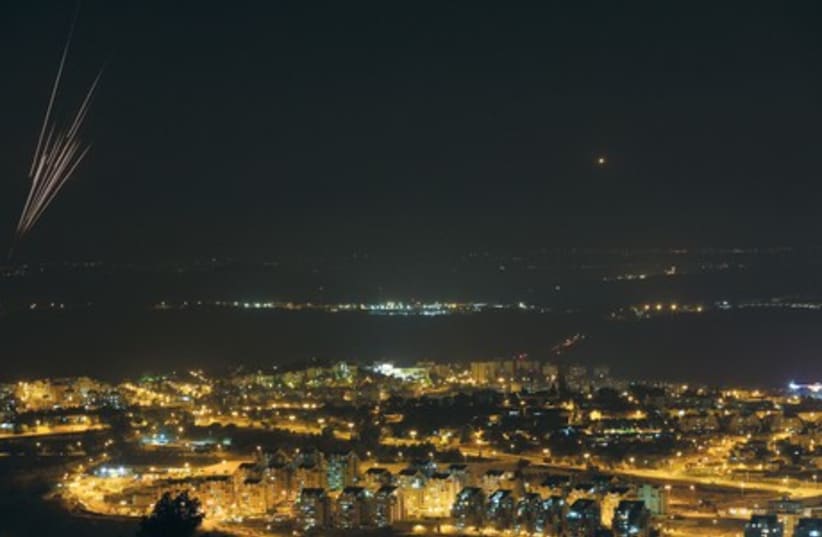Iron Dome intercepted 23 rockets, shooting down rockets over Ashdod, Ashkelon and Gaza border communities.
The army began calling up the 40,000 reserve soldiers the cabinet approved for Operation Protective Edge, launched the previous night to stop the rocket fire from Gaza. IDF Chief of Staff Lt.-Gen. Benny Gantz asked for the 40,000 soldiers in order to replace conscripted forces in the West Bank, thereby enabling their deployment to the Gaza border.
Defense Minister Moshe Ya’alon brought the request to the cabinet, and the ministers approved it. By Tuesday afternoon, the IDF had begun issuing reserve notices.
Following high-level security deliberations on Tuesday morning, Prime Minister Binyamin Netanyahu decided to expand the military operation in the Gaza Strip, including beginning preparations for a ground offensive. No time limit was put on the operation, but senior political officials said it could be “for a long time.”
The objective, according to the officials, is to return quiet to the South, but the equation that “quiet would be met with quiet” was no longer the operative principle.
During the day, Netanyahu spoke to a number of world leaders to explain Israel’s position. The IDF had called up 1,500 reservists on Monday, many of them border police who replaced conscripted infantrymen in Judea and Samaria, and some Home Front Command officials. Other reserves called up are combat unit headquarters staff, tasked with managing vital logistics and communications needs.
Operation Protective Edge saw the IAF strike some 100 terrorist targets in the Gaza Strip on Tuesday, and came after more than 250 rockets and many mortar shells were fired at communities in southern Israel in recent weeks.
IDF Chief of Staff Lt.-Gen. Benny Gantz said that Hamas chose an escalation with Israel and that other terrorist organizations have joined it. “We will now activate all of our force and take all the time that is needed in various stages in order to reach victory,” Gantz said.
“There may be surprises; there may be rocket fire here or a terrorist attack and difficulties there. We must be prepared for all possibilities,” the army chief warned. “We must continue the mission, for as long as necessary... The public is resilient and stable. It trusts the military and expects it to act.
“We will accomplish goals against Hamas, hurt it badly, remove its capabilities, defend our civilians and our country, and we will exact from Hamas the full price of the strategic mistake that it has made,” Gantz said.
Meanwhile, the Israel Air Force struck 150 targets in the Gaza Strip, and Palestinians reported casualties from a number of the strikes.
Some 100 underground rocket launchers and 10 attack tunnels were among the targets.
Three homes in Gaza used by Hamas as command and control centers for enabling rocket fire were also among the targets.
The homes belonged to Hamas members Muhammad Sba’at, a senior member its rocket-launching formations in Beit Hanun on the northeast edge of the Strip, who was involved in several recent attacks; Amin Ibrahim al-Alba’an, a Hamas member; and Abu Jarad, a Hamas member from northern Gaza who has been engaged in terrorism against Israel.Herb Keinon contributed to this report.
